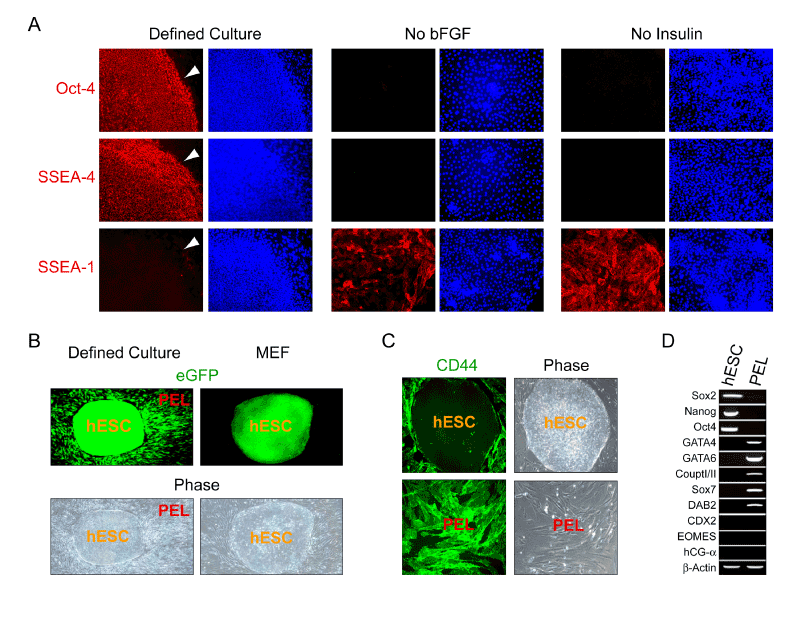
 |
| Figure 1: Resolving the essential elements for the growth of undifferentiated hESCs permits constitutively emergence of the PEL cells. (A) Analysis of undifferentiated hESCs seeded on purified human laminin and cultivated in a serum-free defined medium. Undifferentiated hESCs, indicated by the expression of Oct-4 (red) and SSEA-4 (red), maintained in media containing both bFGF and insulin do not express SSEA- 1 (red). Omitting either bFGF or insulin results in differentiation and SSEA-1 expression in cells. All cells are indicated by DAPI staining of their nuclei (blue). (B) Representative eGFP+ hESC colonies showing that the defined culture system permits constitutively emergence of differentiated fibroblastlike cells (PEL) that migrate beyond the colonies (hESC) as compared to those maintained on MEFs as the control. (C) Immuncytochemical analysis showing that the cell surface protein CD44 was expressed in PEL cells, but not in their clonally-related hESCs. (D) Comparative RT-PCR analysis showing that those PEL cells downregulated epiblast associated genes (Oct-4, Sox2 and Nanog) and upregulated genes associated with the early extraembryonic endoderm lineage (GATA 4/6, Sox 7, CouptI/II, and DAB2), but not with the trophoblast lineage (CDX2, EOMES, and hCG-α). |